Our content is reader supported, which means when you buy from links you click on, we may earn a commission.
How Kaela Sosa’s Digital Training Company is Transforming Diversity in Business Through Online Courses
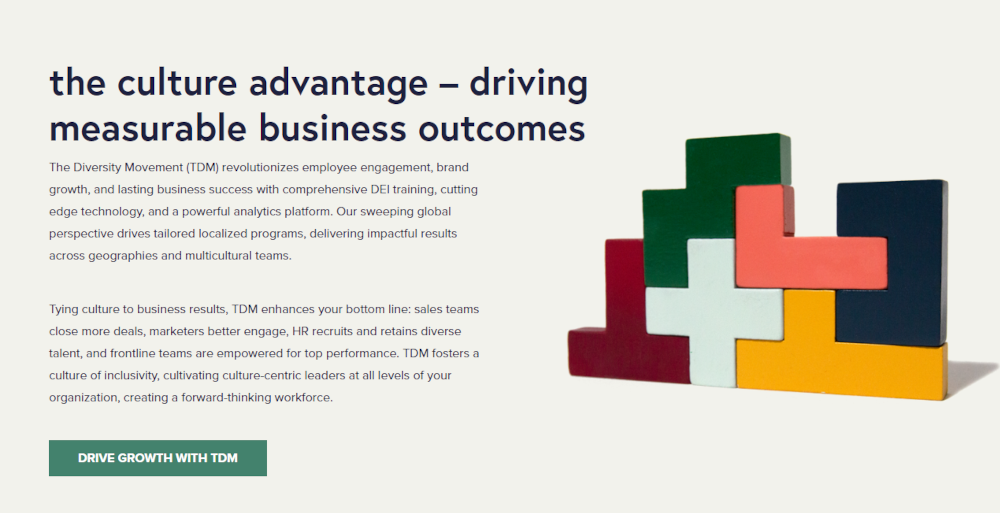
- Who: Kaela Sosa
- Website: thediversitymovement.com
- Course Topic: Diversity in Business
- Interesting Stats: Revenue to date is $950,000
Who are you and what digital training company have you created?
I am a co-founder and Curriculum and Programming Manager at The Diversity Movement, a Raleigh-based diversity, equity, and inclusion firm that has worked with 125+ organizations on their DEI journeys. At The Diversity Movement, I lead the development and execution of learning programs, including digital learning, online courses, certificate programs, and certification opportunities. The Diversity Movement combines traditional consulting with a suite of award-winning products to drive progress within client organizations. Our online courses cover topics from DEI fundamentals to LGBTQ+ allyship and inclusive marketing.
What market does your digital training serve?
Our courses are designed for anyone looking to further their DEI education. Our Foundations, Essentials, Unconscious Bias, and Inclusive Language courses are beneficial to people of all roles and within all industries. The ABCs of LGBTQ+ is tailored to people looking to specifically expand their LGBTQ+ knowledge and allyship.
The Diversity Leader’s Blueprint is specifically designed for DEI leaders within organizations, with titles such as DEI Manager, Director of DEI, or Chief Diversity Officer. We have two courses that cover disability inclusion and etiquette, designed for individuals and organizations looking to be more inclusive of this population. And finally, Inclusive Marketing is designed for any marketer looking to expand their market reach and customer loyalty. The course covers high-level concepts as well as granular tactics, making it great for Chief Marketing Officers and Social Media Managers alike.

What’s the biggest benefit of taking your online courses?
Our digital DEI courses meet learners where they are at. If you’re new to DEI and need to brush up on common terminology, Essentials is a great place to start. If you’re a DEI champion looking to further your allyship, ABCs of LGBTQ+ dives into how support the LGBTQ+ community all year long. Or, if you’re a DEI leader struggling to drive transformative change in your organization, The Diversity Leader’s Blueprint provides the tools needed to maintain DEI momentum.
The fully online, asynchronous courses also provide the psychological safety needed to explore these topics. While in-person trainings are great for encouraging dialogue, many learners might feel overwhelmed or too embarrassed to ask their questions. Our learning breaks things down into comprehensible 2 to 5-minute chunks so that learners can proceed at their own pace. The courses also include learning checks to ensure understanding.
How did you get into the market?
In late 2019, executives from our parent company recognized a gap in quality diversity, equity, and inclusion courses and embarked on a journey to create a better offering that would drive real change in companies. We studied other courses, became certified experts, and researched how to integrate technology and other innovative learning techniques into an engaging platform. Shortly after our initial 5-module course launched, George Floyd was murdered, and The Diversity Movement snowballed from a single e-learning course to a fully functioning organization with a full-time staff of over 20 and a catalog of customizable products and consulting services.
We then let industry trends, extensive research, and client needs drive the creation of our subsequent eight courses, each designed to solve a specific problem we were observing in the DEI space.
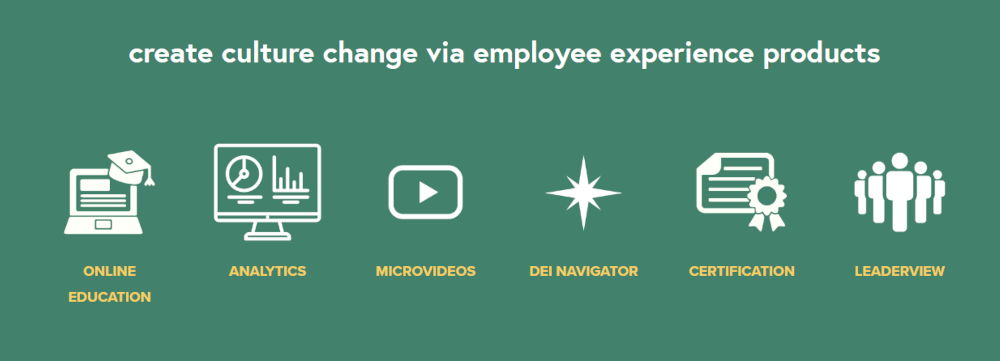
Why did you decide to create a digital training company?
Our cofounders – Donald Thompson, Jackie Ferguson, Kurt Merriweather, and me – were disheartened by the lack of quality DEI courses. The courses that we saw were compliance-focused, dull, outdated, or all the above. We set out to create an entertaining, multimedia course that would make DEI learning fun and engaging. It was important for us to focus not only on what DEI is and what organizations are required to do by law, but also the extensive business benefits of DEI, the impacts of unconscious bias, and the importance of effective communication. We created our first course because we believed we could create a comprehensive program that would fill a gap in the market.
Did you have any moments of doubt before you launched your training company?
We encountered many roadblocks when we were creating our namesake course, Diversity: Beyond the Checkbox – Foundations. Quite frankly, while we all had DEI experience, we had very little to no experience creating digital courses. We were especially lacking experience in managing the production of multimedia course assets.
This lack of experience led to multiple late nights when shoots took much longer than expected and sometimes even reshoots of the same video that didn’t turn out well. Then, just as we completed our third module of five, COVID hit and any in-office production was halted. Rather than delay the launch of the course, we did what we could from home, using Zoom to record video and QuickTime to gather audio segments. Although it wasn’t ideal, we launched on time with a course composed half of professional-grade assets and half of scrappy at-home assets.
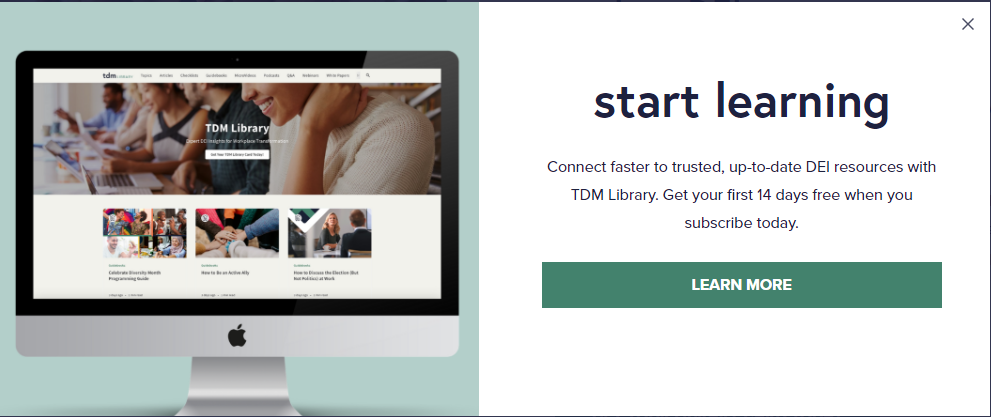
If so what made you turn it around and do it anyway?
We decided to launch the course as it was for a couple of reason. First, as with everyone else at the time, we weren’t sure how long COVID would last and didn’t want to risk a multi-month delay to publication. Second, we believed that our content was important and that our course could and would help organizations drive sustainable and impactful change.
As business leaders, we had all been through our fair share of one-off, one-hour, compliance-based DEI trainings and were acutely aware of how little impact they brought to an organization. We were confident that our 5-hour, beyond-compliance training – paired with our other products and services – would transform workplace cultures in significant ways. We didn’t want to wait any longer to help create environments where all employees could show up authentically and do their best work.
What are your online courses like?
All of our online courses are multimedia, meaning they consist of text lessons, video lessons, audio lessons, presentation lessons (slideshows overlaid with audio), PDF lessons, and quizzes. The videos are primarily talking head style, with one instructor talking directly into the camera. However, most of our courses also include stock image videos, mini documentaries, acted scenes, and whiteboard animations. The average length of each video is 1.5-4 minutes.
How long does it take you or your team to create a new course?
We keep the majority of the course development process in-house, as I oversee the course from initial outline to launch. The first step to any course is to draft a written outline that is used to guide the initial course draft which is a fully written document. At this point, the goal is to get all of the research and information on paper in a way that flows well. Rather than write the individual lessons independently, we write the entire course as if it was a white paper, ensuring that each topic transitions naturally into the next. Only after the entire course is written and edited – with internal and external expert review – do we begin to divide the course into individual lessons and identify the format for each lesson.
In order to choose a format for each lesson, I ask myself “how would this information best be conveyed?” If there is a lot of hard data, perhaps a slideshow is best so that we can display statistics in graphical formats. If it’s information we want learners to reference time and time again, perhaps we choose a PDF handout. While we try to balance the formats within the course to keep things interesting, the priority is always conveying information in the way that will be best comprehended.
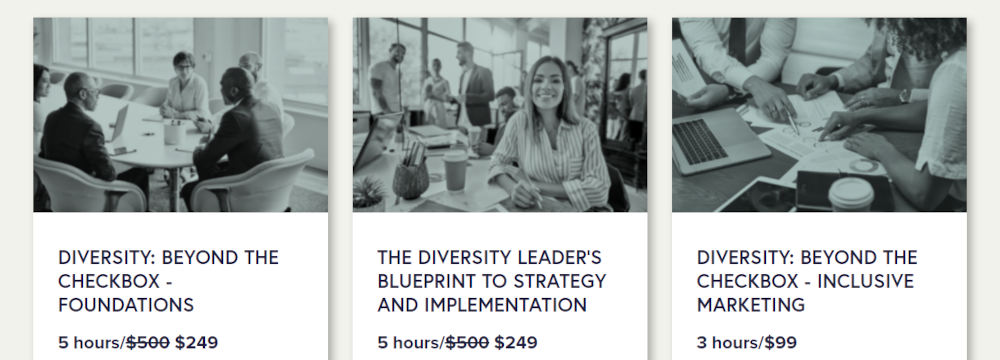
After the format for each lesson is selected, we enter our asset development phase.
Our internal videographer oversees and executes the production of all video and audio assets, while I oversee and execute the production of all written assets and slideshow presentations. We largely utilize employees as talent, although we occasionally hire external actors. All assets undergo quality assurance by at least two internal team members.
Once the assets are final, it’s simply a matter of uploading them into Thinkific in a sort of drag-and-drop fashion. At this point, we also ensure all lessons are accessible by uploading caption files for all videos, adding transcripts to any spoken content, and ensuring the slideshow presentations can be fully comprehended by either viewing just the slides or listening only to the voiceovers.
The last step is doing a final internal QA once all the assets are uploaded. If everything passes the test, we publish the course. The entire course development process takes 2-4 months depending on the length of the course.
Tell us a little about the process of launching your first course and getting your first enrollment(s).
Our enrollment is largely B2B, with clients bulk enrolling in our courses. At the time of launch, we had pre-established relationships with a couple of clients who pre-purchased our initial course. B2B sales continue to be the primary enrollment driver, with individual customers making up just a small share of sales.
Do you have a lead magnet?
As mentioned before, our sales are largely B2B. What typically happens is we will identify 2-3 leaders within an organization who get full access to our courses for a limited duration. They can then determine which courses they would like to roll out and to which groups within the organization.
For the few B2C sales that come through, those are largely driven by promotions in our monthly newsletter and free monthly webinars.
What’s the traffic strategy that works best for you?
As mentioned above, our primary strategy is B2B sales – course access is written into our contracts with most of our clients.
Our clients vary in size, so they may purchase anywhere from 50 to 4,000 seats for a course. - Kaela Sosa Click To TweetWe encourage course participation as the first step in any client engagement so that all of our client’s employees are on the same page regarding terms and concepts prior to any in-person training or large-scale initiatives.
B2C sales are driven largely by our newsletter and free monthly webinars.
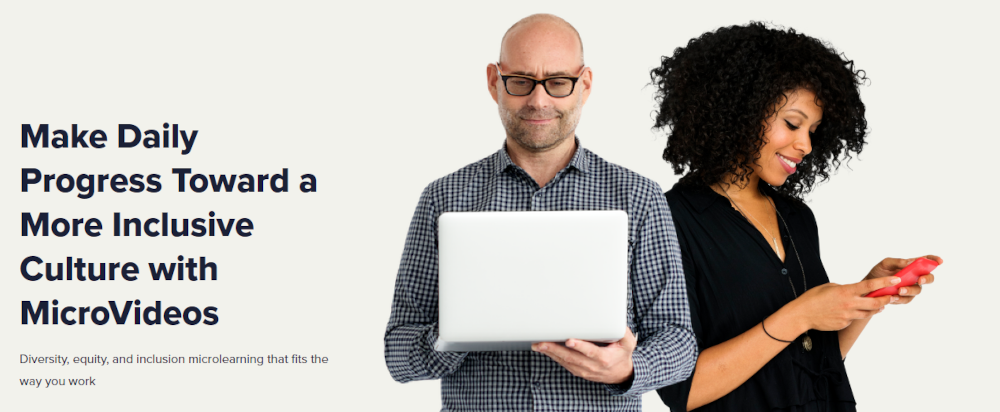
What online course platform are you using?
We have exclusively used Thinkific since 2019.
Do you like it?
Thinkific is very user friendly, both for the course creator and course taker. From a creator’s perspective, Thinkific provides the course structure, and all you have to do it drop in the individual lessons, whether that means uploading a video, audio file, slideshow, or PDF or copy and pasting a text lesson. Thinkific’s video library also makes it easy to add custom thumbnail and caption files.
Thinkific also has in-platform landing pages and course pages that you can customize to advertise your courses. However, you can always lead users directly to a checkout page should you wish to bypass the Thinkific landing page and utilize your own page on your company’s website.
Finally, Thinkific has robust progress tracking which allows creators to see exactly what lessons each student has completed.
Are there any features you wish it had?
Our company is really pleased with the features and support Thinkific provides. However, there are two things we would love to see them add in the future.
- Robust email drip campaigns. Right now, there is an option to set up global email drips, but they are not course specific. Basically, the drip reminds any user who hasn’t completed a course to log back in to make progress. We’d love to see an option to direct learners to additional courses, set up custom cadences, and ping course-specific reminders.
- More accessibility features. Overall, the platform is fairly accessible. However, there is not an option to add captions or a transcript to slideshow lessons. Our solution is to make sure the slideshows contain robust visuals and audio so that learners can get everything they need from one or the other. However, it would be nice to have closed captions appear over the slides as the voiceover plays.
What made you decide to use your chosen platform over others?
When we first begun making courses, we were very new to the process. We wanted something that would be easy to use from the creator’s end. Thinkific provided the tools and structure we needed to launch our first course.

What other tools do you use to run your digital training business?
Thinkific is the only platform we use for our online courses. However, we do utilize other platforms for our other educational products. For instance, we use Vimeo OTT for our MicroVideo library and ghost.io for TDM Library.
We use Active Campaign for our newsletter and GoToWebinar for our free monthly webinars, both of which drive course registration.
What books or training programs have you found useful on your journey to a successful business owner that others might find valuable too?
Thinkific provides a lot of great, free resources to course creators that help you best format and market your courses.
Our CEO, Donald Thompson, has provided a lot of great guidance and leadership lessons. I’ve grown a lot as a leader and professional with his mentorship over the past few years.
Of course, The Six Thinking Hats is a classic book that helps teams work together better and more creatively.
Do you have any big mistakes you’ve made along the way that you’d be willing to share?
Something we struggled with – and continue to struggle with – is marketing our courses (and other products). Our team has extremely high standards for any content that we produce, but sometimes that perfectionism gets in the way of efficiency and effective marketing. Most product marketers will agree that hyping up or even pre-selling your product before it’s 100% ready is an effective strategy. While we’ve done so occasionally, it’s something our team is still working on.
Please share some idea of revenue for your digital training company.
Revenue to date is $950,000.
Please tell us a little about what the money you’ve earned from running your digital training company has done for you.
We’ve gone from a team of 4 part-time employees sharing space and equipment with our parent company in early 2020 to a staff of 20+ full-time employees with our own office in downtown Raleigh.
In addition to revenue are there any numbers you would like to share?
We’ve had nearly 10,000 individuals enroll in one of our online courses. The fact that we’ve been able to educate so many people about the benefits of diversity and inclusion means so much to us.
In 3.5 years of business, we’ve also been able to:
- grow our newsletter list to over 21,100 subscribers
- launch a podcast that ranks in the top 5% of podcast downloads globally
- host monthly webinars that average 600 registrants and a 4.5+ rating
- have 160 participants attend one of our 4-day certificate or certification programs
What has creating your digital training business done for you personally?
Before I began creating courses for The Diversity Movement, I questioned myself as an expert in the field and as a leader overall. I have a degree in Gender Studies from Duke University and worked in the Identity and Diversity Lab there. However, when I first began the course creation process, I was working with 3 company executives who are all Gen Xers, while I was a rather new associate and late-stage Millennial.
It’s safe to say that my confidence in my expertise was lacking. However, with time, and the support of my colleagues, I’ve realized that I am an expert and I am a leader. - Kaela Sosa Click To TweetIn fact, my confidence grew so much overtime that I ended up leading the development of our new 4-day certificate program for DEI leaders. 3 years ago, I never would have thought that I could create my own in-depth DEI program at age 26. But the more I wrote, researched, and interfaced with clients, the more I gained fluency and confidence in DEI topics.
What advice do you have for people just starting out?
Word of mouth is more impactful than you can imagine! - Kaela Sosa Click To TweetAs I mentioned, most of our course sales are B2B. Most of our clients find us via word of mouth. We are still a rather small company with reach limited to the southeast U.S.
However, because we focus so much on quality products and services, our clients are constantly referring other organizations to us. That’s how we’ve managed to secure clients such as Fanatics, Hugo Boss, Country Music Association, and FUJIFILM Diosytnth Biotech despite how young the company is.